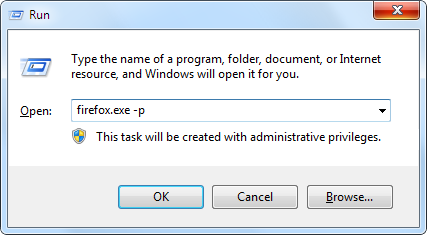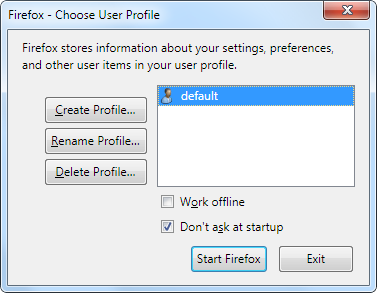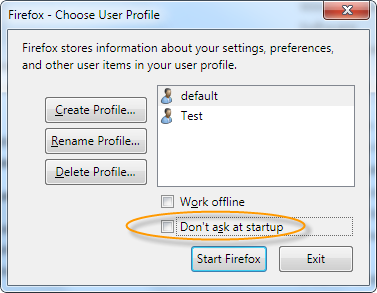Firefox store a user's preferences and data such as installed add-ons, saved passwords, history, bookmarks and others in a unique profile. The first time you start Firefox, it automatically creates a default profile and stores all settings associated with the profile within a special profile folder on your computer.
Most users are unaware that they can create additional profiles in Firefox. Profiles are useful when there are multiple users on the same computer which all share the same user account. For example, the PC in your living room. Profiles can also be helpful in certain situations such as testing of new add-ons – use a “test” profile to test new add-ons, and if they work correctly, install them under your “default” profile. Similarly, you can keep separate profiles installed with different sets of extensions.
To create a new profile or manage existing profiles in Firefox, press Ctrl+R to open the Run dialog box and type “firefox.exe –p” as shown below.

Make sure that Firefox is not running. If it is open, exit it before running this command.
This will launch the Firefox Profile Manager.

Click the 'Create Profile.' button and follow the two-step process to create a new profile. At the end, uncheck the box that says “Don’t ask at startup”.

Doing this will launch Firefox Profile Manager’s profile selection dialog box every time Firefox is started. You can then select a profile to start a browsing session with. If you decide that you no longer want to see this window, check the 'Don't ask at startup' box the next time it appears. The last selected profile will then start automatically when you next start Firefox and you will need to start the Profile Manager again to switch profiles.

Comments
Post a Comment